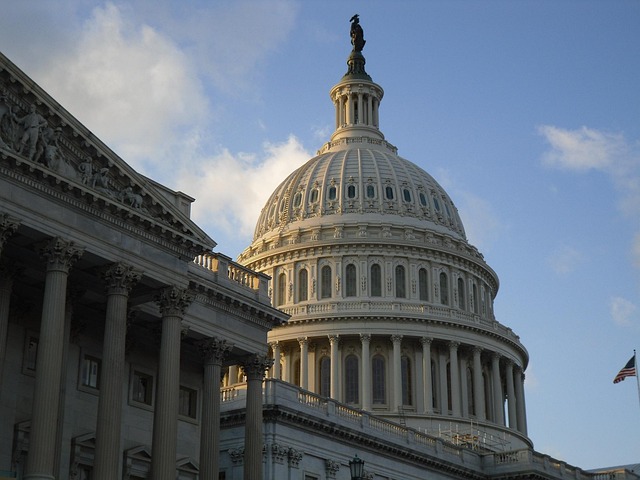How the Supreme Court Expanded GI Bill Benefits for Some Veterans

The Rudisill Decision, a landmark Supreme Court ruling in April 2024, has reshaped the landscape of GI Bill benefits for qualifying veterans with more than one tour of duty. Nine years in the making, this decision was a case brought by veteran James Rudisill and has significant implications for how veterans can access and utilize their hard-earned education benefits.
A Brief History of the Rudisill Case
James Rudisill’s military service spanned multiple periods, technically qualifying him for both the Montgomery GI Bill (MGIB) and the more recent Post-9/11 GI Bill. These programs offer financial assistance for education and training, helping veterans transition back into civilian life and pursue new opportunities.
His situation is unique because not all veterans served long enough or early enough to qualify for the Montgomery GI Bill or its replacement, the Post-9/11 GI Bill. But a long-standing Department of Veterans Affairs (VA) regulation presented a hurdle for veterans like Rudisill.
This rule mandated that veterans who qualified for both GI Bills had to choose one and relinquish their entitlement to the other. This meant they couldn’t combine benefits from both programs, even if their combined usage fell within the maximum 48-month limit.
Rudisill took action to challenge the VA regulation, arguing that veterans should have the flexibility to utilize both GI Bills as long as they didn’t exceed the total entitlement. It was the beginning of a legal battle that would ultimately reach the highest court in the land.
Read next: GI Bill Guide
The Path to the Supreme Court
Rudisill’s case wound through the court system, gaining momentum and attracting attention from veterans’ advocates and legal experts. The central issue at stake was whether the VA’s interpretation of the law was justified or if it unfairly restricted veterans’ access to their earned benefits.
A federal circuit court ruled against Rudisill, who appealed to the Supreme Court. The Supreme Court agreed to hear Rudisill’s appeal and in April 2024, the Court issued its decision. The court sided with Rudisill and struck down the VA rule.
This landmark ruling affirmed that veterans who qualify for the MGIB and the Post-9/11 GI Bill can use both sets of benefits under certain conditions as long as they adhere to the overall time limit.
The Impact of the Rudisill Decision:
The Rudisill Decision has ushered in a new era for veterans’ education benefits. Here’s how it’s making a difference:
- Retroactive Benefits: Veterans previously denied the opportunity to use both GI Bills may now be eligible for additional education benefits. The VA is actively working to identify and notify these individuals.
- Increased Flexibility: Going forward, veterans who serve in multiple periods and qualify for both GI Bills can choose how they utilize their benefits. This opens up more educational pathways and provides greater financial support for their post-military endeavors.
VA Response to the Rudisill Decision
Following the Supreme Court’s ruling, the Department of Veterans Affairs has taken steps to implement the decision and ensure affected veterans receive their due benefits.
These steps include:
- Establishing a dedicated team: The VA created a specialized team to review past cases where veterans were denied the use of both GI Bills. This team is responsible for identifying veterans eligible for additional benefits under the Rudisill Decision.
- Developing a review process: A comprehensive review process has been established to assess individual cases and determine eligibility for retroactive benefits. This process considers the veteran’s military service history, previous GI Bill usage, and remaining entitlement.
- Outreach and communication: The VA is actively contacting veterans who the decision may impact through various channels, including mail, email, and social media.11 They have also updated their website and resources to reflect the changes brought about by the Rudisill Decision.
- Adjusting policies and procedures: The VA is updating its internal policies and procedures to align with the Supreme Court’s ruling. This includes revising training materials for VA staff and updating the systems used to process GI Bill claims.
Read next: GI Bill Guide
Before You Contact the VA About Your GI Bill
Complete VA Form 22-1995 – Request for Change of Benefit, Program or Place of Training. Select that you request a “Rudisill review” on page two of the online application.
Veterans who have had an education claim decision on or after August 15, 2018, should know that, according to the official site. “VA will review and determine their education benefit eligibility without the need for the Veteran to take any action. Once the VA has reviewed their file, Veterans will receive an official decision.”
For veterans who have had an education claim decision before August 15, 2018, the VA will “review and determine their education benefit eligibility only after they submit a claim. Once VA has received and evaluated their claim, they will receive an official decision.”
Read next: GI Bill Guide
About the author
Editor-in-Chief Joe Wallace is a 13-year veteran of the United States Air Force and a former reporter/editor for Air Force Television News and the Pentagon Channel. His freelance work includes contract work for Motorola, VALoans.com, and Credit Karma. He is co-founder of Dim Art House in Springfield, Illinois, and spends his non-writing time as an abstract painter, independent publisher, and occasional filmmaker.


